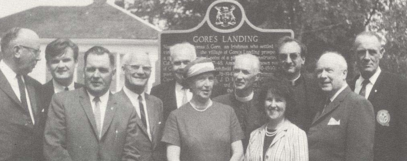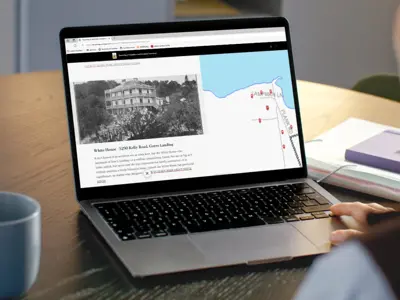Location: Gore's Landing Pioneer Park

Named after Thomas S. Gore, an Irishman who settled in this vicinity in 1845, the Village of Gore's Landing prospered for a time as the terminal point of a plank road construction from Cobourg to Rice Lake, 1847-48. Among the well-known residents of Gore's Landing were Archibald Lampman (1860-1899), noted poet; Derwyn T. Owens (1876-1947), Anglican Primate of All Canada from 1934-1947; J. D. Kelly (1862-1958), historical artist; and Gerald S. Hayward (1845-1926), a painter of miniatures who won acclaim in the U.S. and Britain. Hayward contributed to the building of the present St. George's Anglican Church, constructed of stone in 1908 to replace the wooden church erected 1846-48, and is buried in the adjacent cemetery.
Erected 1968 by the Province of Ontario, Department of Public Records and Archives, and the Archeological and Historic Sites Board of Ontario.


